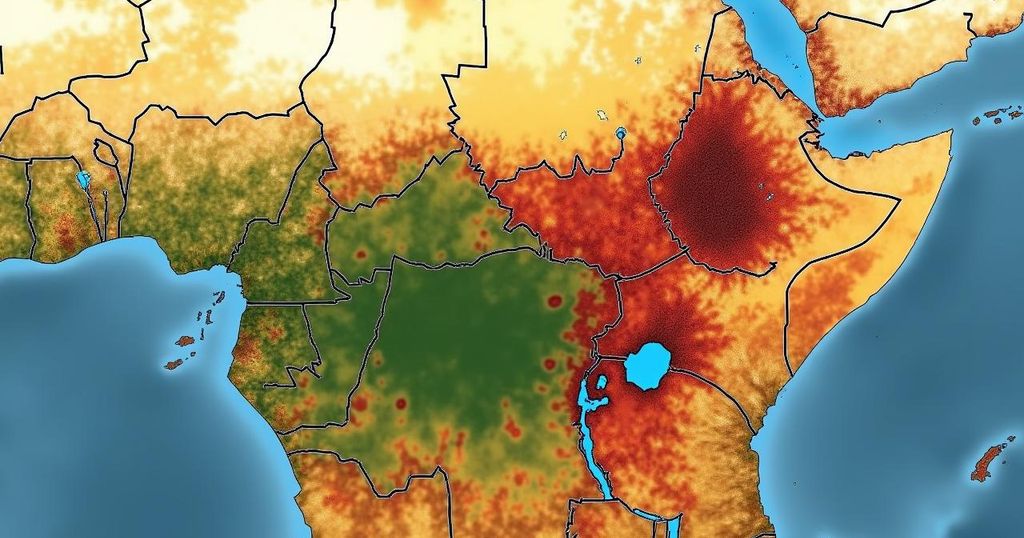Drought Crisis in Southern Africa: An Overview of the Ongoing Humanitarian Emergency

Southern Africa is experiencing severe drought due to the 2023/2024 El Niño, impacting millions with food insecurity, health crises, and displacement. Nearly 23 million individuals are at risk, with urgent assistance needed as crop failures and water shortages exacerbate existing vulnerabilities. The health effects are severe, particularly for children and bottlenecks in health service access due to concurrent epidemics. The situation necessitates immediate and coordinated response actions.
The Southern Africa region is currently grappling with one of its most severe crises due to the 2023/2024 El Niño phenomenon, which has induced extreme drought conditions. This has been characterized by a delayed onset of rains, prolonged mid-season dry spells, and exceedingly high temperatures. According to reports, this event is the most severe El Niño to impact Southern Africa in four decades, exacerbating existing vulnerabilities faced by communities such as failed agricultural yields, economic hardships, and increased rates of food insecurity. Drought conditions have contributed to widespread food shortages and severely hampered access to clean water, resulting in health crises, including outbreaks of disease and substantial livestock losses. National government assessments alongside FEWS NET indicate that maize harvests across Southern Africa have fallen significantly below average when compared to five-year benchmarks. Approximately 23 million individuals are currently facing acute food insecurity, with Malawi, Zambia, Zimbabwe, and Mozambique being the most severely affected nations. During the lean season stretching from October to December 2024, humanitarian assistance is urgently required by an estimated 14 to 14.9 million people. National emergencies have been declared due to drought in several countries, including Botswana, Lesotho, Malawi, Namibia, Zambia, and Zimbabwe, while Angola and Mozambique also confront serious food insecurity challenges, affecting 1.8 million and 3.3 million individuals, respectively. The drought has severely impacted the health of over 2 million children, including more than 500,000 suffering from acute malnutrition. Consequent weather-related crises have resulted in the displacement of thousands, further heightening the risk of infectious diseases and food shortages. This crisis coincides with one of the worst cholera epidemics faced by the region in decades, with Malawi and Mozambique at heightened risk of outbreaks due to deteriorating hygiene and sanitation conditions. Moreover, the drought’s dire implications extend to mental health issues, gender-based violence, and an increased susceptibility to the transmission of HIV and AIDS, emphasizing the pressing necessity for enhanced preparedness and responsive measures across affected areas. The combined adversities of the El Niño event, ongoing cholera outbreaks, conflicts, and climate change have significantly burdened health systems throughout Southern Africa, hampering access to vital sexual and reproductive health services. Currently, more than one million individuals have been internally displaced, predominantly in Malawi, Mozambique, and Zimbabwe, underscoring the intersectionality of climate change and human displacement in the region.
Southern Africa has a long history of vulnerability to climate-related events, with droughts frequently impacting agricultural productivity and water supply. The region’s reliance on rain-fed agriculture makes it particularly susceptible to changes in precipitation patterns. The El Niño phenomenon, occurring every few years, often results in significant disruptions in weather patterns, leading to severe droughts or flooding. The 2023/2024 El Niño is noted as historically significant, bringing unprecedented challenges to food security, public health, and economic stability across the southern African nations. This situation has been exacerbated by existing health crises, such as cholera, and prevailing socio-economic challenges.
In conclusion, the current crisis in Southern Africa, driven by the unprecedented 2023/2024 El Niño event, has precipitated a complex humanitarian disaster characterized by severe food shortages, extensive water scarcity, and widespread health crises. With over 23 million individuals facing food insecurity and significant numbers of children suffering from malnutrition, urgent humanitarian response efforts are essential. The intersection of climate change and health vulnerabilities necessitates a coordinated approach to mitigate the impacts of this crisis, restore stability, and improve access to essential services even amid ongoing shocks to the region’s health systems.
Original Source: reliefweb.int






